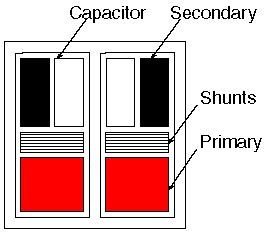What is a Constant Voltage Transformer? CVT Features And Functions Explained
Introduction
From the time people started using personal computers, they grew so popular so quickly that they almost became a craze. The ease of storing large amounts of data in these early computers, however, was offset by the serious snag of losing data due to the slightest voltage fluctuation. For this reason, Constant Voltage Transformers (CVTs) were introduced which very efficiently tackled the minutest disturbance in the mains voltage line. When asked about a constant voltage transformer, people seem to be quite ill-informed regarding its special features and misjudge it to be just a voltage stabilizer.
How a CVT is Different from Other Types of Voltage Stabilizers
Although the SMPS (switched-mode power supplies) in modern computers are well equipped to countermand brief or instantaneous power hiccups, it’s still dangerous living without a foolproof guarantee against these power “devils.” A power blackout of even a few milliseconds can corrupt valuable stored data in computers. The following explanation will give a clear picture of how CVT easily outstrips the ordinary relay type voltage stabilizers and even the SMPS ones.
A good quality relay type voltage stabilizer and SMPS s usually provides a good stabilization of voltage in the range of 160- 290 volts. The same is true for the CVTs too. But ordinary stabilizers and SMPS are completely handicapped and helpless against sudden power surges, spikes, brief power interruptions and dangerous transients. Due to these, even a SMPS inside a computer is at a risk of getting burnt. Also the sophisticated microprocessor ICs inside computers may instantly get damaged due to these power surges. A CVT very effectively guards the output against all the above power drawbacks providing a clean spike-free constant output voltage, and also fills in the short intermittent power gaps (1-5 ms ). Moreover its output is purely sine wave in all circumstances.
How Does a CVT Function to Result in a Hi-class Output Voltage?

- The primary and the secondary windings of a constant voltage transformer are separated by a wide air gap and are magnetically shunted. This results in a dramatic reduction of inductive and capacitive loadings. The design exclusively takes care of the frequent power transients in the main electric line.
- A phase difference exists between the input and the output voltage of a CVT that indirectly gives rise to an excellent output noise reduction.
- Since in a CVT the windings are isolated, the high frequency component of the common mode noise is scraped off.
- In CVTs a phenomenon called “ferro resonance” perfectly tackles and counter balances any variation in the input AC voltage. Here an output secondary inductor is forced to resonate using high performance capacitors, which results in the above phenomenon.
All the above features clearly define what a CVT is and why it is uniquely superior to the relay-type voltage stabilizers and even the SMPSs.
Image courtesy: https://www.aelgroup.co.uk/hb/hb006.htm
